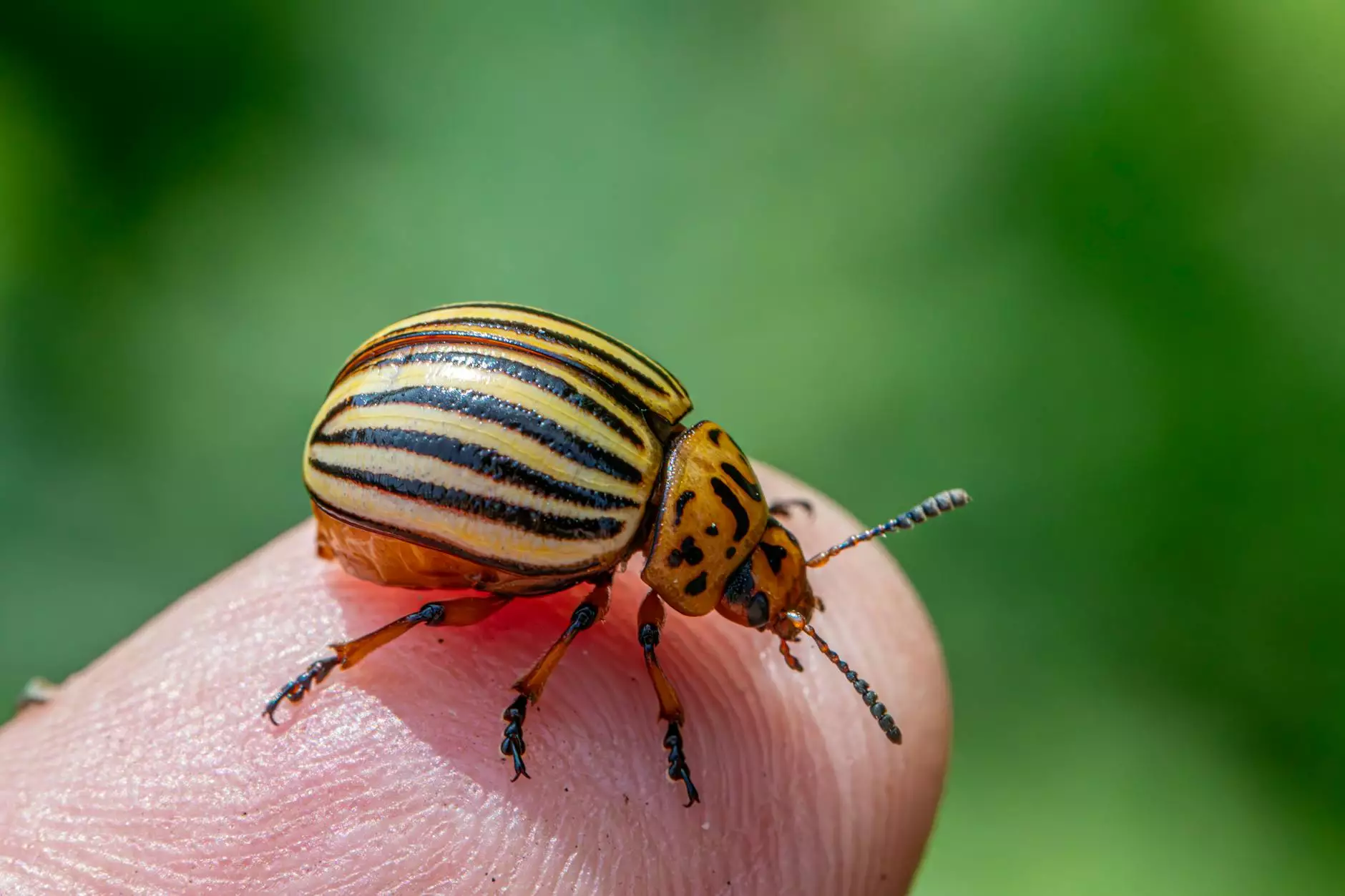Mastering Grain Storage Insect Control: Essential Strategies for Farmers

Grain storage is a crucial component of agriculture, and effectively controlling insect pests is vital to ensuring the safety and quality of your stored products. With the rising concerns of food security and the inevitability of pest infestations, understanding grain storage insect control is more important than ever. This article delves into comprehensive strategies, insights, and practices that ensure your grain remains protected from those pesky bugs that threaten your yields.
Understanding the Importance of Grain Storage Insect Control
Proper grain storage is vital for both quality control and food safety. Insects can proliferate quickly in stored grains, leading to substantial damage and loss. Understanding how to manage and prevent infestations can save farmers significant amounts of money and resources. Here are several reasons why grain storage insect control matters:
- Preservation of Grain Quality: Insects can cause physical damage and deteriorate grain quality, making it unfit for consumption.
- Prevention of Economic Loss: Infestations may lead to reduced marketability of grains, affecting profits.
- Sustainability: Effective management of grain storage pests contributes to sustainable farming practices by minimizing waste.
- Health Impacts: Some insect infestations can lead to the growth of mycotoxins, which have serious health implications.
Identifying Common Grain Storage Pests
To effectively manage insect control in grain storage, it's essential first to identify the common pests that could infest your grains. Educating yourself on these pests not only helps in prevention but also in applying the correct control strategies. Here are some of the most prevalent pests:
1. Rice Weevil
The rice weevil is a small, dark brown insect that often infests stored grains such as rice, corn, and wheat. They are known for their ability to bore holes through grain kernels.
2. Granary Weevil
This pest resembles the rice weevil but lacks the ability to fly. Granary weevils prefer whole grains and can cause significant damage over time.
3. Indian Meal Moth
The Indian meal moth is a common pest that infests grain products and pet food. Its larvae feed on the stored grain, leaving webbing behind, which indicates an infestation.
4. Flour Beetles
Red and confused flour beetles are commonly found in flour and grain storage. They can be identified by their reddish-brown color and pronounced antennae.
Effective Methods of Grain Storage Insect Control
Once you identify potential pests, the next step is to implement effective insect control strategies. These methods can be categorized into preventative measures and active control techniques.
Preventative Measures
Effective prevention starts with the right planting, harvesting, and storage practices:
- Regular Inspections: Conduct thorough inspections of your grain storage facilities. Look for signs of pests, including droppings, webbing, and damage to grains.
- Proper Cleaning: Maintain cleanliness in storage areas. Vacuum floors, walls, and equipment regularly to remove residues that could attract pests.
- Temperature and Humidity Control: Insects thrive in warm and humid conditions. Keep storage areas cool and dry to discourage infestations.
- Sealed Storage Bins: Use airtight containers to store grains, which limits insect access and spoilage due to air and moisture.
Active Control Techniques
When infestations occur, prompt action is necessary:
- Insecticides: Utilize approved insecticides specifically formulated for grain storage. Ensure to follow the manufacturer’s instructions for safe application.
- Fumigation: In cases of severe infestations, consider fumigating the grain storage area. This method involves using gases to eliminate pests but requires expertise and adherence to safety regulations.
- Biological Controls: Introduce natural predators of grain pests, such as parasitic wasps, to help control pest populations without chemical intervention.
- Traps: Employ sticky traps to monitor pest activity and catch adult insects before they can reproduce.
Integrating Technology in Pest Management
The digital age has brought new tools and technologies into the realm of grain storage insect control. Here are some innovative solutions:
- Smart Sensors: Use sensors to monitor environmental conditions within storage facilities, allowing for real-time data that can help maintain optimal conditions.
- Mobile Applications: Some apps are designed for pest management, providing farmers with timely alerts, pest identification tools, and best practices for control.
- Data Analysis: Use predictive analytics to assess pest risks based on weather patterns, storage conditions, and historical infestation data.
The Role of Education and Training
As pest management strategies evolve, continuous education becomes essential for farmers hoping to maintain successful grain storage practices. It’s vital to stay informed about:
- Latest Research: Keep abreast of current studies related to pest management tactics and the development of new control methods.
- Training Workshops: Participate in agricultural workshops and training sessions to improve pest identification skills and control methods.
- Networking: Engage with fellow farmers and experts to exchange knowledge, share experiences, and learn from each other’s successes and failures.
Conclusion: A Commitment to Responsible Grain Storage Insect Control
In conclusion, effective grain storage is fundamental to protecting crops and ensuring the food supply chain remains healthy. By implementing proactive measures and adapting to new control technologies, farmers can significantly enhance their grain storage insect control practices. It is imperative to foster a culture of continuous learning and adaptation to safeguard supplies and ensure economic success.
At TSGC Inc., we understand the challenges farmers face in maintaining high-quality grain storage. Our expertise in Farm Equipment Repair and Farming Equipment further outlines our commitment to supporting the agricultural community. Together, we can combat the threats posed by grain storage pests, ensuring that your harvest remains safe for consumption.









